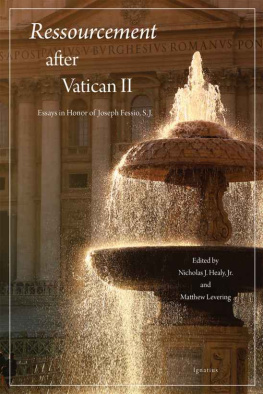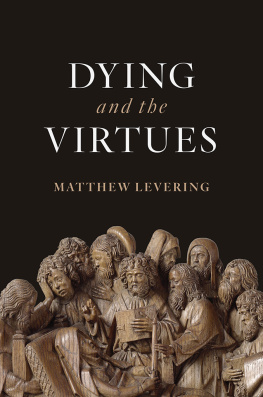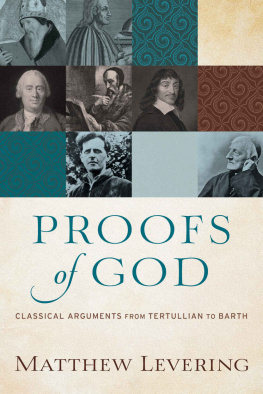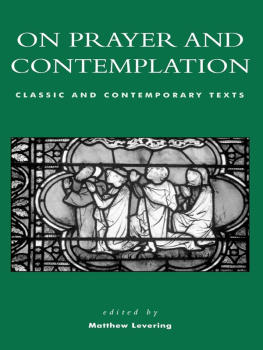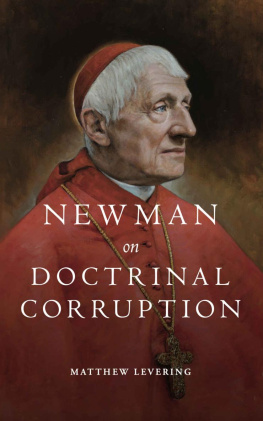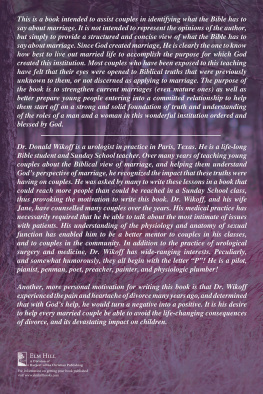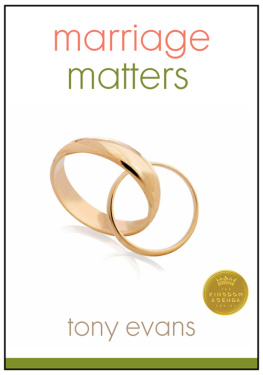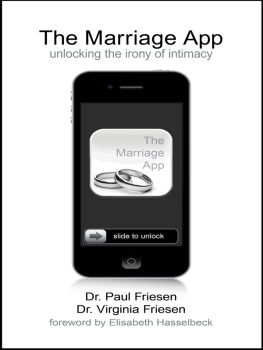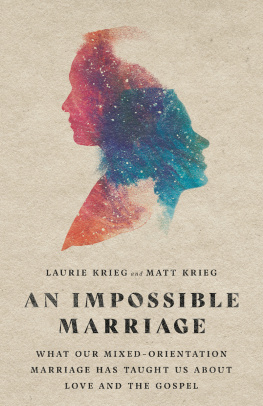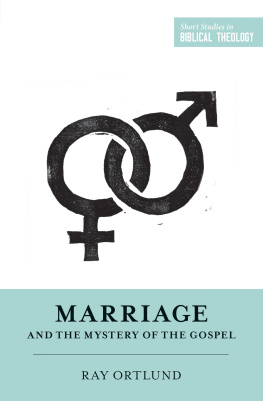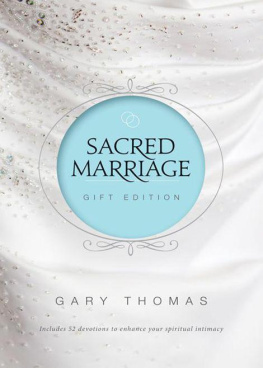
Engaging the Doctrine of Marriage
Human Marriage as the Image and Sacrament of the Marriage of God and Creation
byMatthew Levering
Engaging the Doctrine of Marriage
Human Marriage as the Image and Sacrament of the Marriage of God and Creation
Engaging Doctrine Series
Copyright 2020 Matthew Levering. All rights reserved. Except for brief quotations in critical publications or reviews, no part of this book may be reproduced in any manner without prior written permission from the publisher. Write: Permissions, Wipf and Stock Publishers, 199 W. 8th Ave., Suite 3, Eugene, OR 97401.
Cascade Books
An Imprint of Wipf and Stock Publishers
199 W. 8th Ave., Suite 3
Eugene, OR 97401
www.wipfandstock.com
paperback isbn: 978-1-7252-5193-9
hardcover isbn: 978-1-7252-5194-6
ebook isbn: 978-1-7252-5195-3
Cataloguing-in-Publication data:
Names: Levering, Matthew, author.
Title: Engaging the doctrine of marriage : human marriage as the image and sacrament of the marriage of god and creation / Matthew Levering.
Description: Eugene, OR: Cascade Books,
2019
| Series: Engaging Doctrine | Includes bibliographical references and index.
Identifiers:
isbn 978-1-7252-5193-9 (
paperback
) | isbn 978-1-7252-5194-6 (
hardcover
) | isbn 978-1-7252-5195-3 (
ebook
)
Subjects: LCSH: MarriageReligious aspectsChristianity. | MarriageHistory of doctrinesChristianity. | SexReligious aspectsChristianity.
Classification:
BT706 .L20 2020 (
paperback
) | BT706 (
ebook
)
Manufactured in the U.S.A. 02/24/20
Preface
The Engaging the Doctrine Series
Having written four volumes of my Engaging the Doctrine series, with more to come (God willing), it seems appropriate to offer a brief explanation of what this coordinated set of books aims to accomplish. Put simply, I am attempting to write something of a dogmatics. Yet this term, as applied to my Engaging the Doctrine series, may need to be kept in scare quotes. The term dogmatics, of course, conjures up the great achievements of past theologians who organized and presented synthetically the entirety of Christian doctrine.
The fact that I cannot claim to be in their company has always been clear to me but has recently been brought home still more clearly by reading the nineteenth-century Catholic theologian Matthias Joseph Scheebens introduction to his multi-volume dogmatics. Let me describe it briefly here. Scheeben announces his plan to give, in a compact, strictly scientific form, a presentation of the entire content of dogmatic theology that is as complete and thorough, clear and synoptic as possible, so as to offer to everyone interested in a solid, rich, and living knowledge of divine truth a resource. Scheeben goes on to say that the pages of his dogmatics will reproduce as completely as possible the entire doctrinal substance of Catholic dogma in the development given to it by the Churchs theology, including issues that are of particular importance for the Christian life or for the circumstances of our time. In addition to this material content (taking up doctrine speculatively but also in its historical development), Scheeben intends that his dogmatics will formally display a truly organic arrangement and a strictly scientific development of the doctrinal matter, so that precisely this thorough insight into the connection of the individual doctrines with the key ideas and the highest principles might convey the clear and orderly knowledge of the individual topic.
In addition, while Scheeben wants to show how the Churchs doctrines arise from Scripture and Tradition, he does not want to isolate the individual theses as much as readily occurs with the Scholastic method. Instead of moving from thesis to thesis, he wants to weave them into a whole in a continuous presentation; and at the same time he wishes fully to incorporate the Scholastic methods precision in formulating theses, definitions, and arguments. He seeks to combine the controversial or polemical task of dogmatics with the declarative, positive, and speculative tasks. While including metaphysics and speculation of the highest order, his dogmatics also aims to be fruitful for spiritual meditation and to ensure that the word of God appears as a word full of spirit and life.
Scheeben has already said a lot in the above, but there is more! In his view, every dogmatics should occupy itself with proving that Scripture and Tradition contain the dogmas of the Church and also with understanding these dogmas in their nature and correlation, in their cause and effects, and in all the ways that they can be developed. Thus, he separates dogmatics from practical disciplines such as moral theology, ascetic theology, mystical theology, and pastoral theology, and also from historical disciplines such as biblical exegesis, history of doctrine, history of the liturgy, history of the Councils, and history of the saints. The results of the historical disciplines, he argues optimistically, should serve to prove or to clarify dogmas and should be informed by the conclusions of dogmatics. He notes that the practical disciplines will partly be treated in dogmatics itself, given that Gods supernatural activity in the kingdom of grace is so intimately intertwined with mans moral activity that without consideration of the latter it cannot be depicted at all.
Scheeben clearly knew what he was doing in approaching his dogmatics. By contrast, I have stumbled into my more modest and limited task. Even so, in my fashion, I too seek to offer a relatively comprehensive dogmatics. The present book, Engaging the Doctrine of Marriage, builds upon the three previous volumes of the series: Engaging the Doctrine of Revelation (2014), Engaging the Doctrine of the Holy Spirit (2016), and Engaging the Doctrine of Creation (2017). I envision these dogmatic volumes as an ordered series.
In the first three volumes, my argument broadly runs as follows. The Trinity has revealed himself through the missions of the Son and Spirit, and this divine revelation is faithfully mediated to us through Scripture and Tradition and in a preeminently liturgical context. In the face of diverse controversies, and enriched by liturgical and theological contemplation, the Church enters more deeply into the apostolic deposit of faith and teaches authoritatively on matters that previously had not been fully understood: this is what is meant by development of doctrine, and under the guidance of the Holy Spirit a rupturei.e. the Churchs rejection of a definitively taught truth of faithis not possible (volume 1).
At the source of Christian faith is the holy Trinity, three divine Persons who are one God. I suggest that theologians should articulate the mystery of the Trinity by beginning with the Holy Spirit, without neglecting the Father (who will be at the center of my final volume, on eschatology) and the Son (who will be at the center of my volume on the mysteries of Jesus Christ). Debates over the Spirit expose the fundamental fault lines in post-Nicene Trinitarian theology: the inner-Trinitarian taxis, the relevance of the analogy from the interior processions of the mind, and the filioque. While I hold that the filioque is true and is an important part of illuminating the mystery of the Trinity, I do not thereby think that the Orthodox have abandoned Trinitarian faith (by no means!) since the affirmations sought in the formulation of the filioque can be affirmed in other ways. The relationship of the Spirit to the incarnate Word and to the one, holy, catholic, and apostolic Church is examined in the same theological movement. After treating pneumatological Christology and ecclesiology (including the life of grace and virtue), I focus upon the unity and holiness of the Church because it seems to me that these two aspects are most contested today, given the prima facie evidence that Christians are profoundly divided and that the Church evinces grave moral corruption (volume 2).


